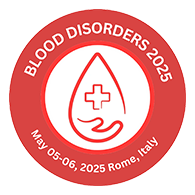Rare Blood Disorders
A set of illnesses known as rare blood disorders often afflict fewer than 1 in 2000 people, representing a tiny fraction of the population. The production, performance, or lifetime of blood cells, including red blood cells, white blood cells, and platelets, can be impacted by several hereditary or acquired illnesses.
Examples of rare blood conditions include:
1. A hereditary illness called haemophilia weakens the blood's capacity to clot, which causes protracted bleeding episodes.
2. A uncommon condition known as aplastic anaemia occurs when the bone marrow is unable to make enough new blood cells.
3. Hemolytic anaemia and associated difficulties are brought on by the unusual acquired condition known as paroxysmal nocturnal hemoglobinuria (PNH), in which the body's immune system assaults red blood cells.
4. A uncommon condition called thrombotic thrombocytopenic purpura (TTP) causes blood clots to develop in tiny blood capillaries all over the body, which lowers platelet counts and damages organs.
5. Hereditary spherocytosis is a hereditary condition that results in spherical red blood cells as opposed to disc-shaped ones, which causes anaemia, jaundice, and an enlarged spleen.
- Diagnosis and Management of Rare Anemias
- Rare Coagulation Factor Deficiencies: Diagnosis and Treatment
- Emerging Therapies for Paroxysmal Nocturnal Hemoglobinuria (PNH)
Related Conference of Rare Blood Disorders
Rare Blood Disorders Conference Speakers
Recommended Sessions
- Anemia
- Biomarkers in Hematology
- Bleeding Disorders
- Clinical and Experimental Hematology
- Coagulopathies
- Gene and Cell Therapies for Blood Disorders
- Hematologic Malignancies
- Hematology and neurological disorders
- Hematology in COVID-19 patients
- Hematology in Pediatrics
- Hematology-oncology
- Hematopoietic Stem Cell Transplantation
- Hemostasis
- HIV/AIDS
- Immunohematology
- Immunotherapy for Blood Disorders
- Leukemia
- Myeloma
- Rare Blood Disorders
- Thalassemia
- Thrombosis and Hemostasis
Related Journals
Are you interested in
- Biomarkers in Hematology and Oncology - Hematology Congress 2026 (Germany)
- Blood Disorders: Diagnosis and Treatment - Hematology Congress 2026 (Germany)
- Cancer Genomics & Metabolomics - Hematology Congress 2026 (Germany)
- Case Reports in Hematology - Hematology Congress 2026 (Germany)
- Clinical Haematology - Hematology Congress 2026 (Germany)
- Cord Blood Transplantation - Hematology Congress 2026 (Germany)
- Digital Imaging in Hematology - Hematology Congress 2026 (Germany)
- Haematology and Pharma Industry - Hematology Congress 2026 (Germany)
- Hematologic Cancers - Hematology Congress 2026 (Germany)
- Hematology and Cardio-Oncology - Hematology Congress 2026 (Germany)
- Hematology Nursing - Hematology Congress 2026 (Germany)
- Hematology: Diagnostics and Screening - Hematology Congress 2026 (Germany)
- Hematopoietic Malignancies - Hematology Congress 2026 (Germany)
- Immunohematology - Hematology Congress 2026 (Germany)
- Neuro-Hematology - Hematology Congress 2026 (Germany)
- Organ Specific Cancer - Hematology Congress 2026 (Germany)
- Pediatric Hematology - Hematology Congress 2026 (Germany)
- Stem Cell Therapy - Hematology Congress 2026 (Germany)
- Transfusion Medicines - Hematology Congress 2026 (Germany)
- Vascular Bleeding Disorders - Hematology Congress 2026 (Germany)

